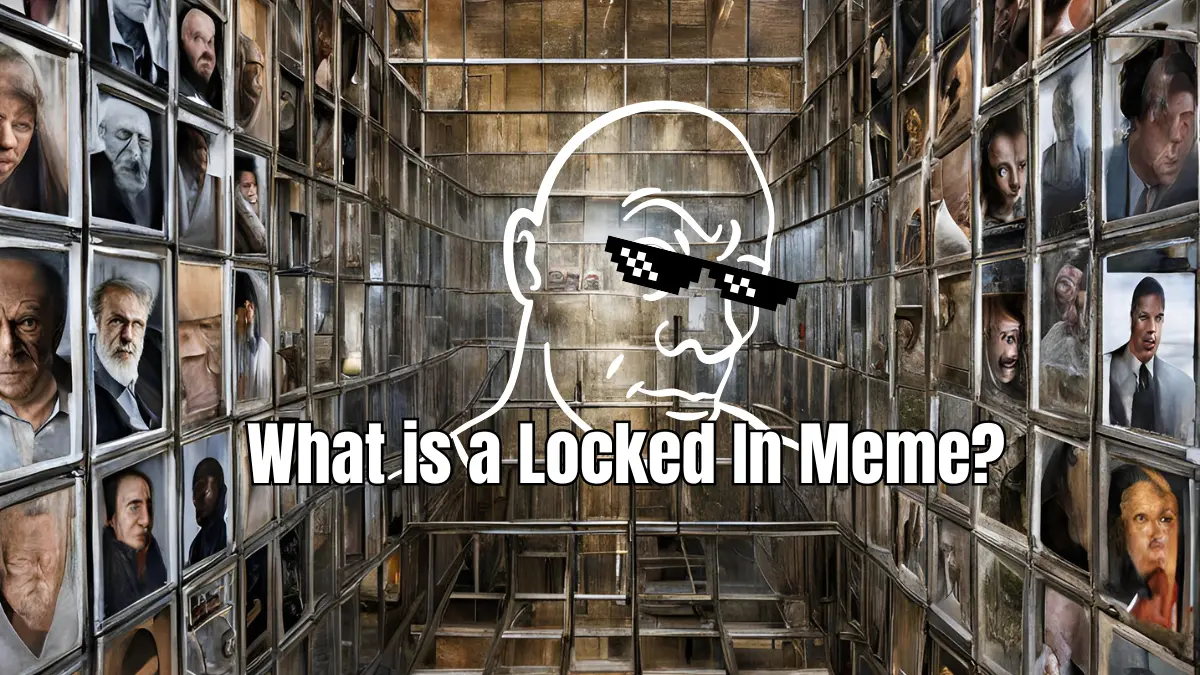Table of Contents
- 1Introduction
- 2What is a Meme?
- 3Evolution of Memes
- 4
- 5Types of Memes
- 6Understanding Locked In Memes
- 7Origin of Locked In Memes
- 8Popular Examples of Locked In Memes
- 9Mechanisms of Locked In Memes
- 10Psychology Behind Locked In Memes
- 11Cultural Impact of Locked In Memes
- 12Locked In Memes in Digital Culture
- 13Social Media and Locked In Memes
- 14Locked In Memes in Marketing
- 15Criticism of Locked In Memes
- 16Locked In Meme vs. Viral Meme
- 17Creation of Locked In Memes
- 18Memetic Engineering
- 19Future of Locked In Memes
- 20Frequently Asked Questions (FAQs)
- 21Conclusion
Introduction
In the vast landscape of internet culture, memes have emerged as a powerful and ubiquitous form of expression. Among the myriad types of memes, the “Locked In Meme” has gained particular prominence due to its unique characteristics and widespread appeal. This article delves into the concept of Locked In Memes, exploring their origin, mechanisms, and impact on culture and society.
What is a Meme?
A meme, in its simplest form, is a piece of content often humorous that spreads rapidly across the internet. These pieces of content can take various forms, including images, videos, text, and even audio clips. Memes are characterized by their ability to convey ideas and emotions quickly and efficiently, often resonating deeply with a wide audience.
Evolution of Memes
The concept of memes predates the internet. The term “meme” was first coined by Richard Dawkins in his 1976 book “The Selfish Gene” to describe how cultural information spreads. With the advent of the internet and social media, memes evolved rapidly, becoming a cornerstone of digital communication.
Types of Memes
Memes come in numerous varieties, each with its distinct style and purpose. Some common types include:
- Image Macros: These are the most recognizable form, featuring images with overlaid text.
- GIFs: Short, looping videos that capture a specific moment or reaction.
- Video Memes: Longer clips that often involve remixing or adding new context to existing footage.
- Text Memes: Simple text-based memes that rely on clever wordplay or references.
- Dank Memes: These are often surreal and absurd, catering to niche internet subcultures.
Understanding Locked In Memes
Locked In Memes are a specific subset of memes that, once established, become deeply ingrained in online culture. They are characterized by their persistent relevance and the way they become a staple within particular communities or across the internet as a whole. Unlike fleeting viral memes, Locked In Memes endure and maintain their popularity over extended periods.
Origin of Locked In Memes
The origins of Locked In Memes can be traced back to the early days of internet forums and image boards. Communities such as 4chan and Reddit played pivotal roles in creating and propagating these memes. Over time, certain memes became so embedded in internet culture that they attained a “Locked In” status.
Popular Examples of Locked In Memes
Several Locked In Memes have left an indelible mark on internet culture. Notable examples include:
- “Doge”: Featuring a Shiba Inu dog with comic sans text, this meme became a symbol of internet humor.
- “Pepe the Frog”: Originally a comic character, Pepe evolved into a widely used meme with diverse meanings.
- “Rickroll”: The act of misleading someone with a hyperlink that leads to Rick Astley’s “Never Gonna Give You Up” music video.
Mechanisms of Locked In Memes
Locked In Memes typically follow specific mechanisms that contribute to their longevity. These include:
- Cultural Resonance: They tap into widely relatable themes or emotions.
- Adaptability: They can be easily modified to fit different contexts or trends.
- Community Endorsement: Strong support from online communities helps sustain their popularity.
Psychology Behind Locked In Memes
The psychological appeal of Locked In Memes lies in their ability to create a sense of belonging and shared experience. They often evoke nostalgia, humor, or a sense of insider knowledge, making them particularly engaging and memorable.
Cultural Impact of Locked In Memes
Locked In Memes have a profound impact on culture, influencing language, behavior, and even societal norms. They often reflect and shape public discourse, acting as a barometer for collective sentiment.
Locked In Memes in Digital Culture
In digital culture, Locked In Memes serve as a form of shorthand communication. They encapsulate complex ideas or emotions in a simple, easily recognizable format, facilitating rapid information exchange and bonding within online communities.
Social Media and Locked In Memes
Social media platforms play a crucial role in the dissemination and entrenchment of Locked In Memes. The algorithms and sharing mechanisms of platforms like Twitter, Facebook, and Instagram amplify the reach and longevity of these memes.
Locked In Memes in Marketing
Businesses and marketers have recognized the potential of Locked In Memes as a tool for engagement and brand promotion. By leveraging popular memes, companies can tap into existing cultural trends and connect with audiences in a relatable way.
Criticism of Locked In Memes
Despite their popularity, Locked In Memes are not without criticism. Some common critiques include:
- Overuse: Repetition can lead to a meme losing its original impact.
- Context Collapse: The widespread use of a meme can strip it of its original meaning or nuance.
- Commercial Exploitation: The use of memes by brands can be seen as inauthentic or exploitative.
Locked In Meme vs. Viral Meme
While both Locked In and viral memes achieve widespread recognition, they differ significantly. Viral memes often experience a short-lived burst of popularity, whereas Locked In Memes sustain their relevance over time.
Creation of Locked In Memes
Creating a Locked In Meme involves a blend of creativity, cultural insight, and timing. Successful Locked In Memes often start as organic expressions of humor or commentary within online communities before gaining broader traction.
Memetic Engineering
Memetic engineering refers to the deliberate design and dissemination of memes to achieve specific goals. This practice can be seen in marketing campaigns, political messaging, and social movements.
Future of Locked In Memes
The future of Locked In Memes will likely see them becoming even more integrated into digital communication. As technology and culture evolve, new forms and applications of memes will emerge, continuing to shape how we share and interact online.
Frequently Asked Questions (FAQs)
What defines a Locked In Meme?
A Locked In Meme is a meme that has achieved a lasting presence and continued relevance within internet culture, often becoming a staple reference point.
How do Locked In Memes differ from viral memes?
Locked In Memes sustain their popularity over time, while viral memes typically experience a brief surge in popularity before fading away.
Why do Locked In Memes endure?
Locked In Memes endure due to their cultural resonance, adaptability, and strong community endorsement.
Can businesses effectively use Locked In Memes in marketing?
Yes, businesses can leverage Locked In Memes to connect with audiences and capitalize on existing cultural trends, though they must be careful to maintain authenticity.
What role do online communities play in Locked In Memes?
Online communities are crucial in creating, endorsing, and sustaining Locked In Memes, providing the initial momentum and ongoing support needed for their longevity.
How do Locked In Memes impact society?
Locked In Memes influence language, behavior, and societal norms, reflecting and shaping public discourse and collective sentiment.
Conclusion
Locked In Memes represent a fascinating and enduring aspect of internet culture. Their ability to resonate deeply with audiences, adapt to changing contexts, and sustain their relevance over time makes them a unique and powerful form of digital communication. As we continue to navigate the evolving landscape of the internet, Locked In Memes will undoubtedly remain a significant and influential presence.

